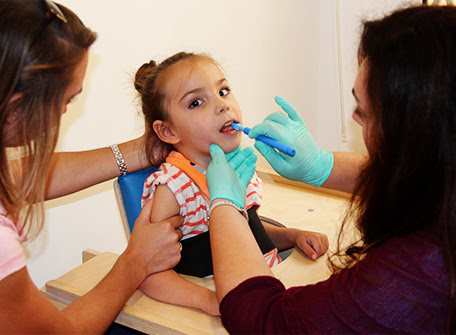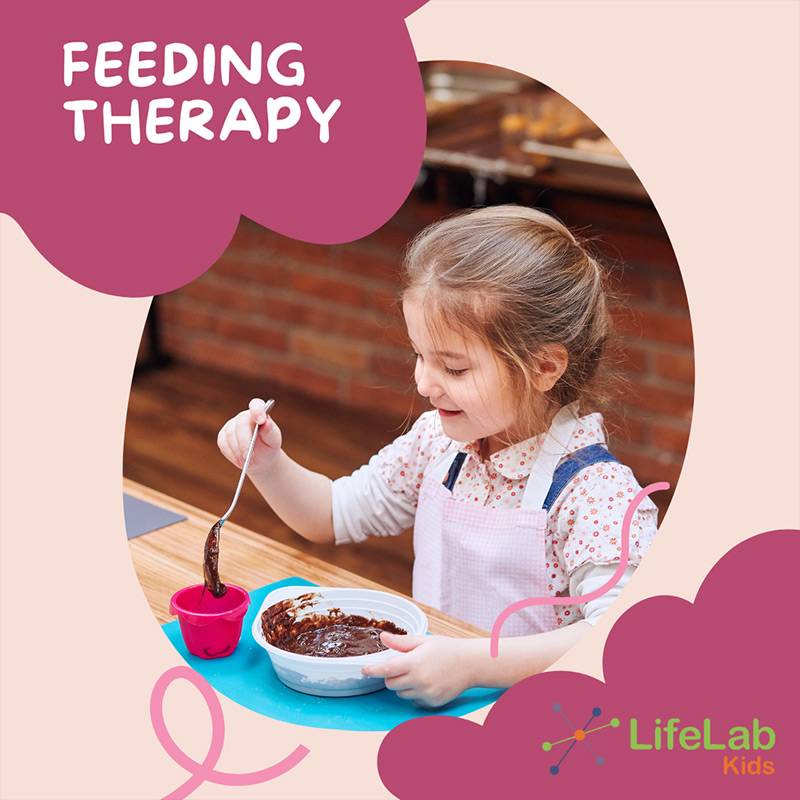Navigating the Course to Successful Feeding: Ingenious Techniques and Treatments for Effective Feeding Treatment
Are you having a hard time to discover reliable techniques and treatments for successful feeding therapy? Look no better. This post will certainly direct you via the path to success, giving ingenious strategies to assess feeding obstacles and established achievable objectives. With evidence-based approaches, you'll find out how to resolve sensory processing problems and make use of assistive technology and flexible equipment. And also, we'll show you the relevance of collaborating with families and caregivers for ideal feeding end results. Get prepared to navigate the course to effective feeding!
Assessing Feeding Obstacles and Identifying Objectives
You ought to begin by assessing your youngster's feeding difficulties and recognizing particular goals for their therapy. This step is vital in creating a reliable feeding treatment strategy. Begin by observing your kid's feeding patterns and habits. Try to find any kind of aversions or difficulties they may have in the direction of particular foods or appearances. Make note of any kind of sensory or physical concerns that may be affecting their capability to eat. You can after that set specific objectives for their therapy once you have actually recognized these difficulties. These goals should be realistic and attainable, focusing on improving your youngster's feeding abilities and general nourishment. As an example, you may establish a goal for your child to be able to endure a broader variety of appearances or to self-feed with utensils. It is very important to communicate these objectives with your kid's feeding therapist so they can customize the therapy sessions to attend to these specific obstacles. By examining your child's feeding difficulties and setting objectives, you are taking the primary step towards aiding them establish successful feeding abilities.
Implementing Evidence-Based Strategies for Feeding Therapy
Executing evidence-based strategies for feeding therapy can cause favorable end results for children. When you include these techniques right into your youngster's treatment strategy, you are guaranteeing that the interventions made use of are supported by clinical research study and have actually been shown effective. This technique raises the chance of success and helps address the specific feeding challenges your child may be experiencing.
By complying with evidence-based techniques, you can supply your child with the most effective possible care and assistance. These strategies may consist of making use of a variety of sensory experiences during nourishments, such as exploring different structures and flavors, to motivate approval of new foods. Furthermore, applying behavior modification methods can aid address choosy eating practices and promote much healthier eating patterns.
An additional important element of evidence-based feeding treatment is entailing the family members in the treatment procedure. By supplying education and assistance to caregivers and parents, they can play an active role in helping their child conquer feeding challenges. This collaborative approach enhances the efficiency of treatment and promotes long lasting positive adjustments in your kid's eating routines.

Dealing With Sensory Processing Issues in Feeding Therapy
Attending to sensory handling concerns in feeding treatment can be challenging, but it is necessary for advertising a favorable eating experience for kids. When you experience a child with sensory processing difficulties throughout nourishment, it is very important to recognize that their responses to specific structures, tastes, smells, or even sounds are not willful (feeding therapy farmingdale ny). By acknowledging and addressing these concerns, you can aid produce a helpful atmosphere that encourages healthy and balanced consuming practices
This technique permits the kid to come to be familiar with the food and its sensory YOURURL.com homes at their very own pace. In addition, providing a selection of structures and tastes can aid desensitize their sensory system and expand their food choices.
Involving the child in sensory play tasks can additionally be helpful. Encourage them to check out different structures, such as squishing, squeezing, or touching different food items. This can assist normalize sensory input and minimize aversions to particular textures.
An additional essential facet is giving a organized and tranquil eating environment. Decrease disturbances, such as loud sounds or brilliant lights, which can overwhelm their detects and prevent their ability to focus on consuming. Developing a foreseeable routine and using visual timetables can additionally assist the kid really feel even more safe and secure and in control throughout mealtime.

Using Assistive Modern Technology and Adaptive Tools
Making use of assistive innovation and flexible equipment can significantly enhance the feeding experience for youngsters with sensory processing troubles. Mealtime can be tough and frustrating when you have trouble with sensory handling. With the right tools, you can make it a more delightful and successful experience.
One alternative is utilizing specialized plates and utensils made to suit your needs. These tools may have textured takes care of or a larger grip, making them less complicated to hold and control. Plates with separated sections can help divide different foods and stop look at more info them from touching, which can be a source of pain for some kids.
In addition to specialized plates and tools, there are likewise assistive devices that can be used throughout feeding. A heavy vest or lap pad can offer deep stress input, helping to soothe and control your sensory system. A shaking toothbrush or chewable precious jewelry can offer dental sensory stimulation, making the act of consuming more satisfying.
Modern technology can also play a function in boosting the feeding experience. There are apps and devices readily available that can supply visual or auditory hints, such as timers or motivates, to aid news you remain focused and organized during mealtime.
Working Together With Households and Caretakers for Effective Feeding End Results
When teaming up with families and caregivers, you can collaborate to create a helpful and caring environment for successful feeding results. By entailing households and caregivers in the feeding treatment procedure, you can get beneficial insights right into the child's feeding choices, routines, and obstacles. feeding therapy long island. This collaboration enables a holistic approach to feeding treatment, addressing not only the physical aspects but likewise the mental and emotional variables that may impact a youngster's feeding capacities
One secret element of working together with caregivers and families is providing education and training. By equipping them with expertise and skills, they can proactively join the feeding therapy process and support the kid's development outside of therapy sessions. This can consist of educating them feeding methods, techniques for taking care of mealtime actions, and comprehending the importance of uniformity and routine in developing healthy eating habits.
In addition, including family members and caregivers in setting goal and therapy planning ensures that their viewpoints and goals for the youngster are taken into account. By working together, you can create attainable and realistic objectives that line up with the household's values and top priorities - food therapist farmingdale. This joint strategy promotes a feeling of possession and empowerment, creating a strong foundation for successful feeding end results
In enhancement, regular and open communication with family members and caretakers is vital for efficient cooperation. By keeping ongoing dialogue, you can address issues, offer support, and make needed modifications to the feeding treatment strategy as required. This interaction likewise enables sharing progression updates, celebrating achievements, and recognizing any type of difficulties or obstacles that might emerge.

Verdict
You have explored numerous approaches and interventions for efficient feeding therapy, such as evaluating difficulties, executing evidence-based techniques, resolving sensory processing problems, and making use of assistive innovation. Bear in mind to always stay innovative and proactive in your approach to feeding therapy.
It's crucial to connect these objectives with your child's feeding therapist so they can tailor the treatment sessions to address these certain obstacles.Executing evidence-based approaches for feeding therapy can lead to positive end results for children.Attending to sensory processing problems in feeding therapy can be tough, yet it is important for promoting a positive eating experience for kids. By including family members and caretakers in the feeding treatment procedure, you can get beneficial understandings right into the kid's feeding obstacles, habits, and choices. By furnishing them with understanding and skills, they can actively get involved in the feeding treatment process and sustain the kid's development outside of therapy sessions.